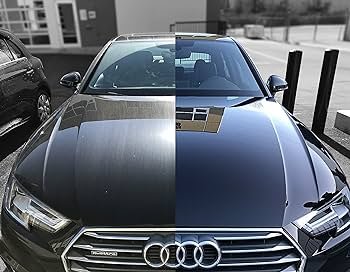How Ceramic Coating Transforms Auto Detailing
Ceramic coatings, also known as nano-coatings or glass coatings, are liquid polymer solutions that, when applied to a vehicle's exterior surfaces, chemically bond with the paint to create a protective layer. The primary component of ceramic coatings is silicon dioxide (SiO2), which forms a transparent, durable shell over the paintwork. Additionally, ceramic coatings may contain other ingredients such as titanium dioxide, polysiloxanes, and proprietary additives to enhance specific properties.
The key characteristics of ceramic coatings include hydrophobicity, chemical resistance, UV protection, and scratch resistance. Hydrophobicity refers to the ability of ceramic coatings to repel water, causing it to bead up and roll off, carrying dirt and contaminants with it. This property keeps the car cleaner for longer and makes washing and maintenance easier. Ceramic coatings also provide a protective barrier against environmental contaminants such as bird droppings, insect splatter, tree sap, and road salts, resisting chemical etching and staining. By blocking harmful UV rays, ceramic coatings help prevent paint oxidation and color fading, preserving the vehicle's appearance. While not impervious to scratches, ceramic coatings offer an additional layer of defense against minor abrasions and swirl marks.
The application of ceramic coatings requires precision, expertise, and meticulous preparation to achieve optimal results. The process typically involves surface preparation, application of primer, ceramic coating application, curing and bonding, and final inspection. Surface preparation includes thorough cleaning and decontamination to remove dirt, grease, wax, and other residues. Application of primer enhances adhesion to the paintwork, while ceramic coating application is done using specialized applicators to ensure even coverage. Once applied, the ceramic coating undergoes a curing process, during which it chemically bonds with the paint molecules. After curing, the vehicle is inspected to ensure uniform coverage and a flawless finish.
The adoption of ceramic coatings in auto detailing has been driven by a myriad of benefits, including long-term protection, enhanced gloss and depth, ease of maintenance, increased resale value, and versatility. Despite their self-cleaning properties, ceramic-coated vehicles should be regularly washed to remove surface contaminants and maintain the hydrophobicity of the coating. Harsh chemicals, abrasive cleaners, and automatic car washes should be avoided to protect the integrity of ceramic coatings. Periodic top-up treatments or refresh applications may be considered to restore water beading and surface protection. Additional protective measures such as paint protection film (PPF) or car covers can further safeguard the paintwork against physical and environmental damage.
Ceramic coatings represent a remarkable advancement in auto detailing technology, offering unparalleled protection, enhancement, and longevity for vehicle surfaces. By understanding the composition, application process, benefits, and maintenance requirements of ceramic coatings, car enthusiasts and professionals can elevate their detailing practices to new heights. With the right knowledge and expertise, ceramic coatings have the power to transform ordinary vehicles into showcases of automotive excellence, ensuring that they remain pristine and captivating for years to come.
